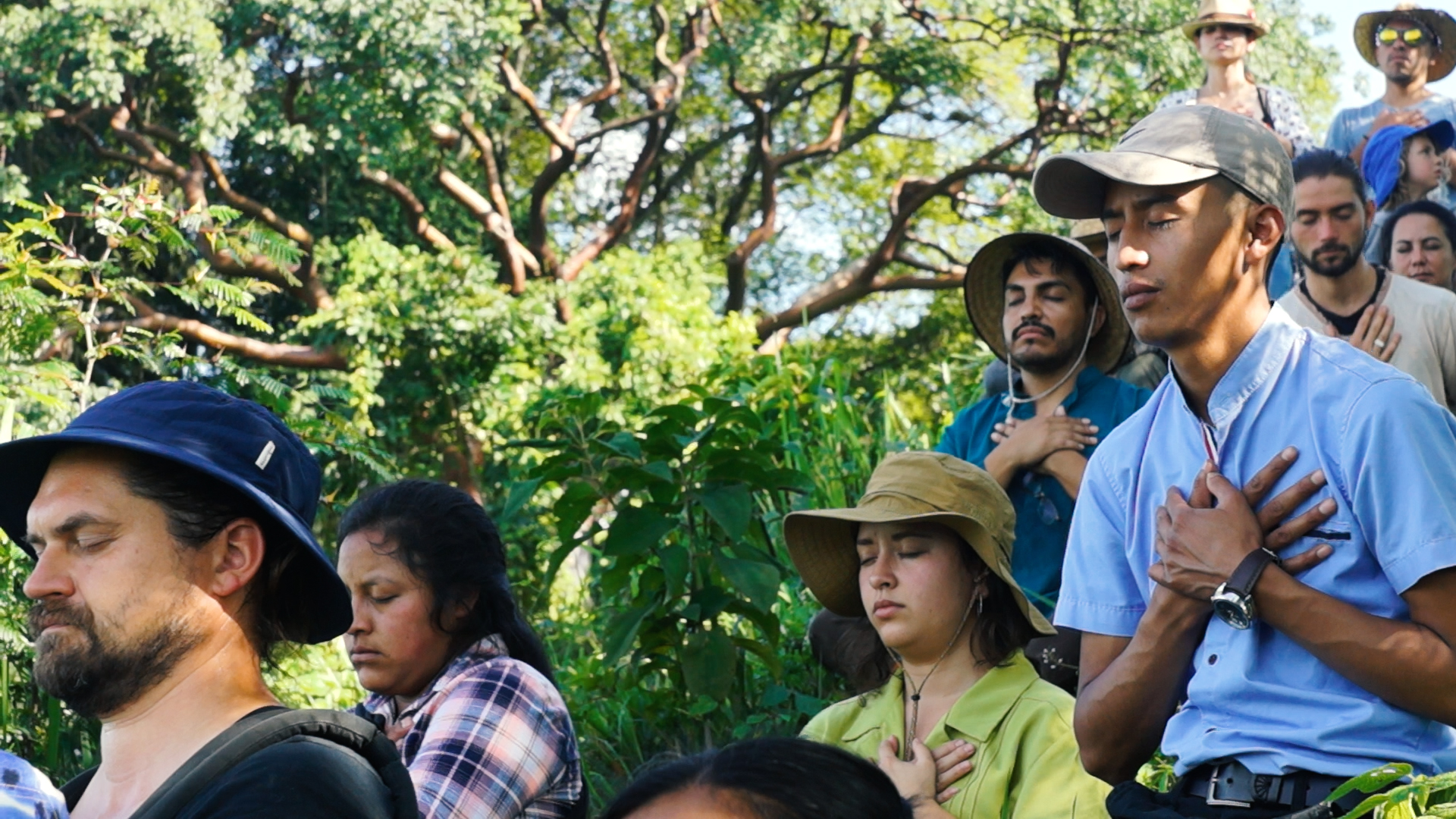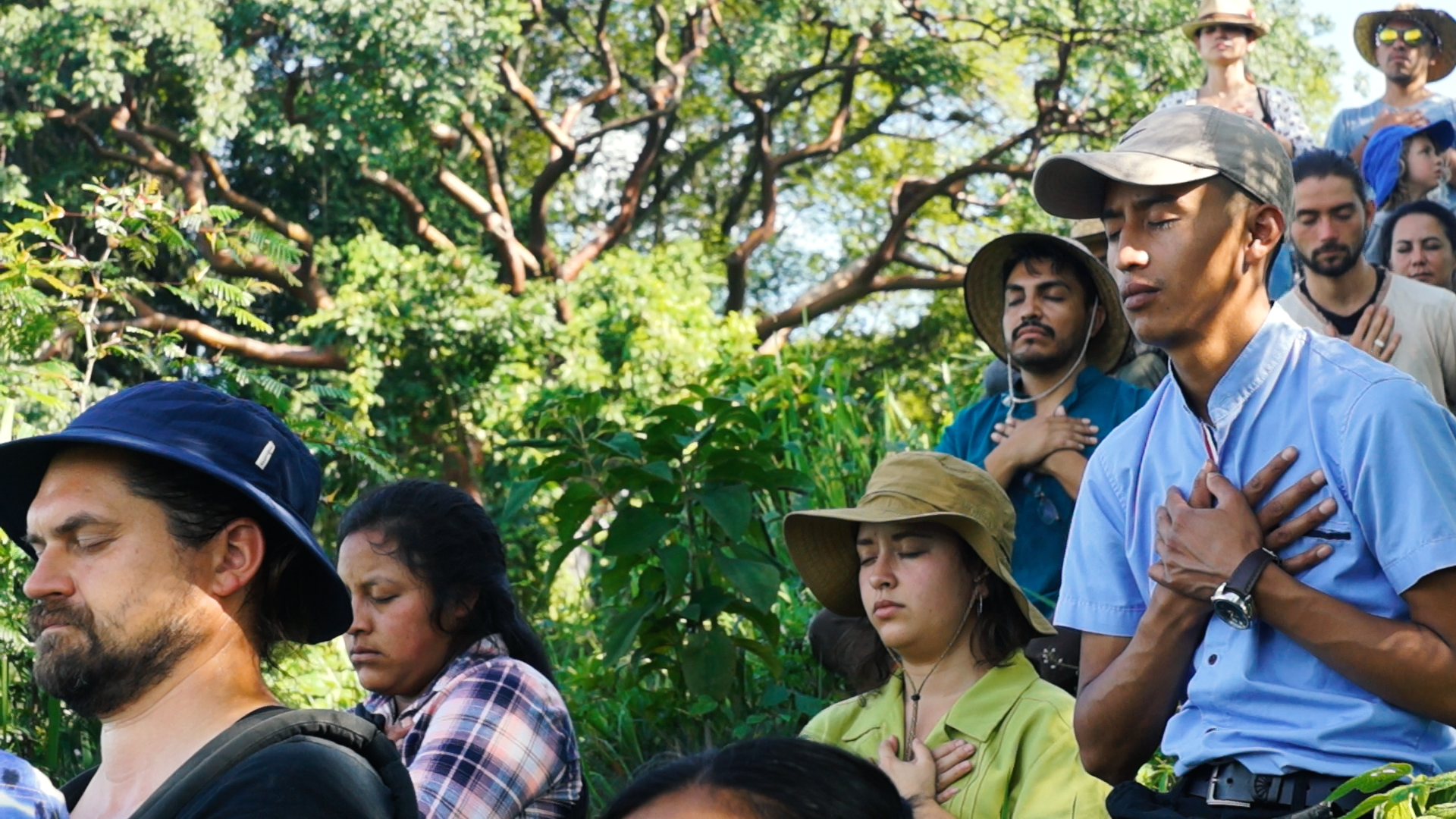Meet the nonprofit preparing Mexico for climate change – Mexico News Daily

Report on El Maíz Más Pequeño: Integrating Sustainable Development Goals into Climate Change Adaptation
Organizational Mission and Alignment with SDG 13: Climate Action
El Maíz Más Pequeño, a non-profit organization with 15 years of operational experience, is dedicated to preparing communities for the impacts of climate change. Its core mission directly supports the targets of SDG 13 (Climate Action) by strengthening resilience and adaptive capacity to climate-related hazards. The organization has a history of working with Indigenous communities throughout Mexico, engaging young people, teachers, and parents in its educational programs. This inclusive approach fosters a comprehensive societal response to climate change, aligning with the principles of leaving no one behind.
Collaborations with entities such as the UN Food and Agriculture Organization underscore its commitment to SDG 17 (Partnerships for the Goals), leveraging multi-stakeholder partnerships to achieve its objectives.
The labAT Initiative: An Educational Model for Sustainable Development
The organization’s primary initiative is the Learning and Transition Laboratory for Climate Change (labAT). This educational tool is designed to systematically integrate sustainable development principles into local education systems, with a strong focus on community-led action.
Fostering Quality Education and Community Leadership (SDG 4 & SDG 11)
The labAT model empowers educators to become agents of change, thereby strengthening local institutions and contributing to SDG 4 (Quality Education), particularly Target 4.7, which calls for education for sustainable development. The process re-centers schools as hubs for community information and action, promoting SDG 11 (Sustainable Cities and Communities) by making communities more inclusive, safe, resilient, and sustainable.
The operational framework of the labAT initiative involves several key stages:
- Conducting community diagnostics to identify local climate-related risks, vulnerabilities, and areas of resilience.
- Integrating this hyper-local information into school lesson plans.
- Developing school projects that provide tangible solutions to community-specific problems.
- Empowering teachers and re-establishing them as community leaders in climate adaptation.
A Localized Diagnostic Framework for the SDGs
The labAT tool, certified by Mexico’s National Copyright Institute (Indautor), focuses on three core reference points that connect directly to multiple Sustainable Development Goals:
- The Domestic Economy: By analyzing the economic stability of individual families, the program addresses SDG 1 (No Poverty) and SDG 8 (Decent Work and Economic Growth), building economic resilience against climate shocks.
- The Community Territory: This component examines local ecosystems, such as watersheds, aligning with SDG 6 (Clean Water and Sanitation) and SDG 15 (Life on Land). It promotes the sustainable management of natural resources as a key adaptation strategy.
- Good Governance: This focus supports SDG 16 (Peace, Justice and Strong Institutions) by encouraging participatory decision-making and improving access to power structures for local actors.
Impact and Strategic Contributions to National and Global Goals
Enhancing Disaster Risk Reduction and Institutional Capacity (SDG 11 & SDG 16)
A key component of the labAT tool is social cartography, where students and community members map local resources and risks. This practice provides critical data for local planning and risk management. For example, the identification of mosquitoes in high-elevation communities signals warming temperatures and new health risks (e.g., dengue fever), directly contributing to the goals of the Sendai Framework for Disaster Risk Reduction and SDG 3 (Good Health and Well-being). This diagnostic process develops a common language for discussing threats and builds community capacity to respond, strengthening local governance in line with SDG 16.
Building Strategic Partnerships for the Goals (SDG 17)
El Maíz Más Pequeño actively builds networks to support climate adaptation. The organization aims to contribute its locally-gathered data to the national risk management atlas, collaborating with the National Institute for Ecology and Climate Change (INECC) and Civil Protection. This partnership enhances the quality of information available to both national policymakers and local actors, embodying the collaborative spirit of SDG 17 and improving the nation’s capacity to implement the Paris Climate Accords and the 2030 Agenda.
Future Directives
To scale its impact, El Maíz Más Pequeño plans to digitize its educational tools into a widely accessible application. This will expand its reach to teachers, students, and community leaders across Mexico, further advancing the integration of climate adaptation and the Sustainable Development Goals into the national curriculum.
Analysis of Sustainable Development Goals in the Article
1. Which SDGs are addressed or connected to the issues highlighted in the article?
The article on the nonprofit organization “el Maíz Más Pequeño” addresses several Sustainable Development Goals (SDGs) through its work on climate change adaptation in Mexican communities. The following SDGs are directly or indirectly connected to the issues discussed:
- SDG 4: Quality Education: The organization’s core strategy is educational. It trains teachers and develops educational models (“Learning and Transition Laboratory for Climate Change”) to integrate climate change adaptation into school curricula. The article states they “have created an educational model for climate change adaptation” and aim to “bring climate change into the national curriculum in a user-friendly way.”
- SDG 13: Climate Action: This is the central theme of the article. The organization’s mission is “to do everything possible to prepare society for climate change.” Their work focuses on adaptation, building resilience, and raising awareness at the local level, directly aligning with the goals of climate action.
- SDG 11: Sustainable Cities and Communities: The work is community-based, focusing on making local communities more resilient. The labAT tool helps conduct “community diagnostics” to identify risks, vulnerabilities, and resilience. This aligns with creating inclusive, safe, resilient, and sustainable human settlements, particularly in its focus on local-level planning and disaster risk reduction.
- SDG 17: Partnerships for the Goals: The article highlights the organization’s collaborative approach, mentioning partnerships with “local, national and international organizations, including the UN Food and Agriculture Organization.” It also notes their effort to find “corporate support” to expand their reach, which exemplifies multi-stakeholder partnerships.
- SDG 3: Good Health and Well-being: A direct link is made between climate change and health risks. The article provides an example of students identifying mosquitoes as a new risk due to warming temperatures, leading to “more outbreaks of dengue fever,” which connects climate adaptation to public health.
- SDG 15: Life on Land: The community diagnostic exercises mentioned in the article identified threats such as “forest fires, illegal logging” and the importance of the “local watershed.” This shows a connection to protecting and restoring terrestrial ecosystems.
- SDG 16: Peace, Justice and Strong Institutions: The organization’s model emphasizes “good governance” and giving communities “access to power structures.” By empowering teachers as community leaders and involving parents and students in decision-making, they promote inclusive and participatory governance at the local level.
2. What specific targets under those SDGs can be identified based on the article’s content?
Based on the activities described in the article, several specific SDG targets can be identified:
- Target 4.7: “By 2030, ensure that all learners acquire the knowledge and skills needed to promote sustainable development, including, among others, through education for sustainable development…” The organization’s work to train teachers and integrate climate change adaptation into lesson plans directly serves this target.
- Target 13.1: “Strengthen resilience and adaptive capacity to climate-related hazards and natural disasters in all countries.” The entire initiative is designed to build local resilience by helping communities identify vulnerabilities and develop projects to adapt to climate change.
- Target 13.3: “Improve education, awareness-raising and human and institutional capacity on climate change mitigation, adaptation, impact reduction and early warning.” The “Learning and Transition Laboratory for Climate Change” is a tool explicitly designed for education and capacity building among teachers, students, and parents.
- Target 11.b: “By 2020, substantially increase the number of cities and human settlements adopting and implementing integrated policies and plans towards inclusion, resource efficiency, mitigation and adaptation to climate change, resilience to disasters…” The organization’s methodology of creating community diagnostics and developing school projects based on local circumstances is a form of implementing local-level adaptation plans.
- Target 17.17: “Encourage and promote effective public, public-private and civil society partnerships, building on the experience and resourcing strategies of partnerships.” The article mentions collaborations with the UN FAO, government bodies like INECC, and the search for corporate support, which are clear examples of such partnerships.
- Target 3.d: “Strengthen the capacity of all countries… for early warning, risk reduction and management of national and global health risks.” The identification of mosquitoes as a new biological indicator and health risk (dengue) in a high-elevation community is a direct example of local risk identification and management.
3. Are there any indicators mentioned or implied in the article that can be used to measure progress towards the identified targets?
The article implies several qualitative and quantitative indicators that can be used to measure progress:
- Number of teachers trained and schools involved: The article explicitly states they work with “teachers representing 26 schools in 26 communities,” which is a direct quantitative indicator of the program’s reach.
- Development of community-specific educational materials: The creation of “hyper-local information into their lesson plans” and “school projects that address these specific community situations” serves as a qualitative indicator of progress towards Target 4.7.
- Use of community diagnostic tools: The implementation of tools like “social cartography” where students map community resources and risks is an indicator of improved local capacity for risk assessment (Target 13.3).
- Identification of new climate-related risks: The example of students identifying “mosquitos,” “forest fires, illegal logging and violence” as threats serves as an indicator of increased community awareness and ability to identify climate-related vulnerabilities (Target 13.1).
- Number and type of partnerships established: The mention of collaborations with the UN FAO, INECC, Civil Protection, and the search for corporate partners are indicators of progress towards Target 17.17.
- Integration of local data into national frameworks: The goal to “contribute to a critical national risk management atlas” is a clear indicator of linking local action to national policy and institutional strengthening (Target 11.b and 16.7).
SDGs, Targets, and Indicators Summary
| SDGs | Targets | Indicators Identified in the Article |
|---|---|---|
| SDG 4: Quality Education | 4.7: Ensure all learners acquire knowledge and skills for sustainable development. | Number of teachers trained (26 mentioned); Number of schools implementing the educational model (26 mentioned); Integration of climate change content into lesson plans. |
| SDG 13: Climate Action | 13.1: Strengthen resilience and adaptive capacity to climate-related hazards. 13.3: Improve education, awareness-raising and human and institutional capacity on climate change. |
Development of community diagnostics; Creation of social cartography maps identifying local risks and resources; Development of school projects addressing specific community vulnerabilities. |
| SDG 11: Sustainable Cities and Communities | 11.b: Increase settlements adopting and implementing integrated policies and plans for climate change adaptation and disaster resilience. | Number of communities developing local adaptation plans (26 communities mentioned); Contribution of local data to the national risk management atlas. |
| SDG 17: Partnerships for the Goals | 17.17: Encourage and promote effective public, public-private and civil society partnerships. | Collaboration with local, national, and international organizations (UN FAO mentioned); Partnership with government bodies (INECC, Civil Protection); Seeking corporate support for digitization. |
| SDG 3: Good Health and Well-being | 3.d: Strengthen capacity for early warning, risk reduction and management of health risks. | Identification of new climate-related health risks (e.g., mosquitoes and dengue fever) through community mapping. |
| SDG 15: Life on Land | 15.2: Promote sustainable management of all types of forests, halt deforestation. | Identification of threats to local ecosystems such as “forest fires” and “illegal logging” in community diagnostics. |
| SDG 16: Peace, Justice and Strong Institutions | 16.7: Ensure responsive, inclusive, participatory and representative decision-making. | Promotion of participation from young people, teachers, and parents in community diagnostics; Empowering teachers as community leaders. |
Source: mexiconewsdaily.com

What is Your Reaction?
 Like
0
Like
0
 Dislike
0
Dislike
0
 Love
0
Love
0
 Funny
0
Funny
0
 Angry
0
Angry
0
 Sad
0
Sad
0
 Wow
0
Wow
0










































































